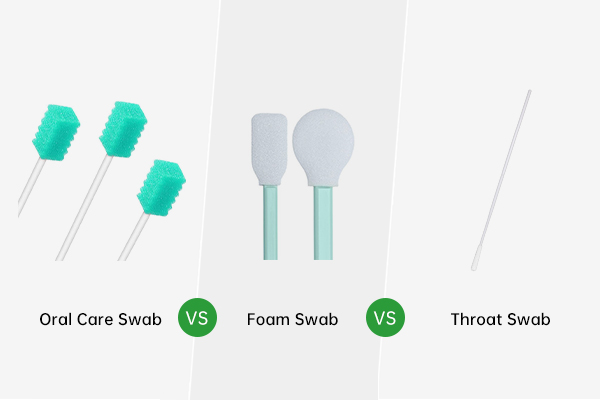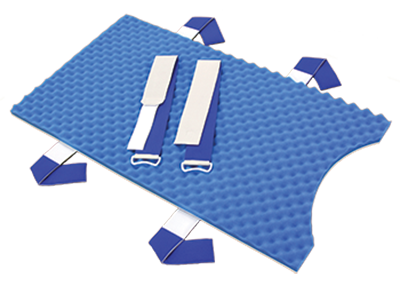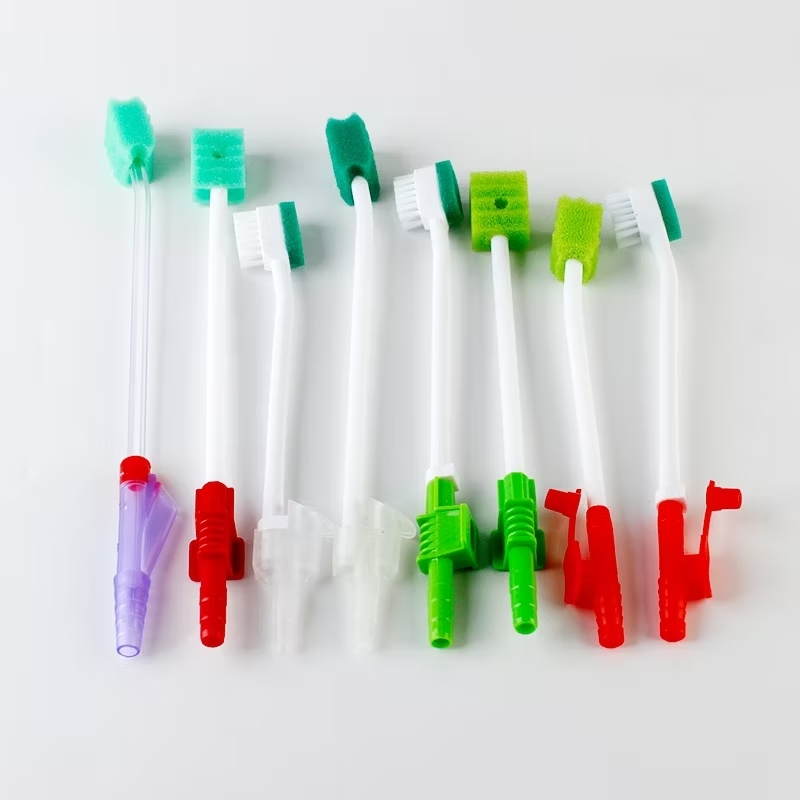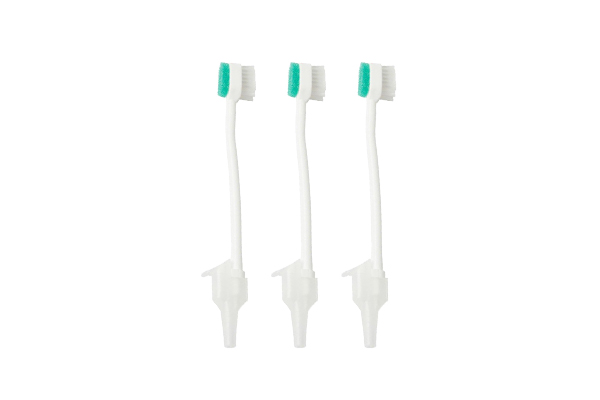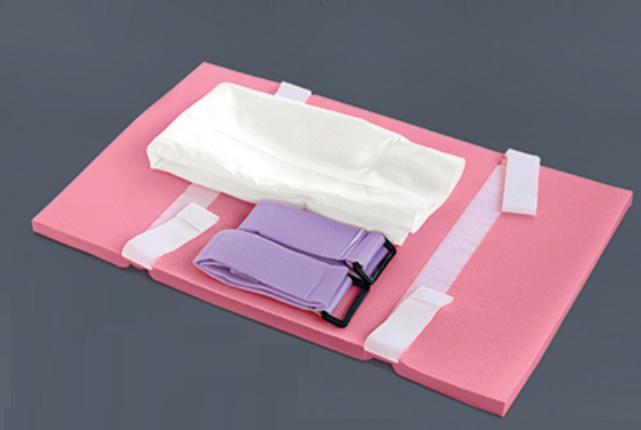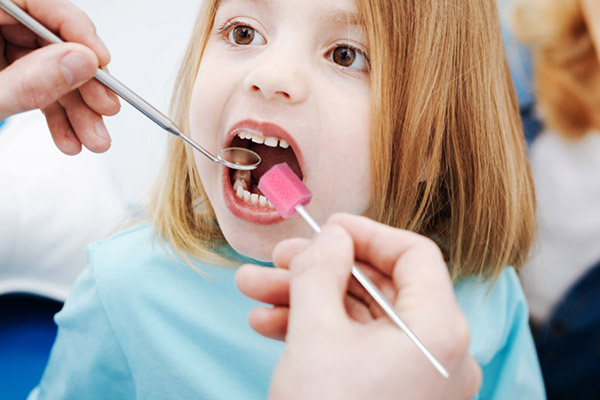Oral Care Swab vs Foam Swab vs Throat Swab: A Comprehensive Comparison
Maintaining hygiene and comfort during medical procedures often relies on specialized tools. Among these, swabs have become essential in hospitals, dental clinics, laboratories, and home care settings. However, not all swabs are the same. Oral care swabs, foam swabs, and throat swabs each serve distinct purposes based on their design, material, and intended application. In this article, we’ll explore the differences between these swabs in terms of their design, function, usage scenarios, advantages, disadvantages, and considerations for selecting the right swab for your needs. What is an Oral Care Swab? An oral care swab is a tool primarily used to maintain mouth hygiene when brushing teeth is not possible. Often resembling a soft sponge or foam tip attached to a stick, these swabs are designed to moisten, clean, and refresh the oral cavity without causing discomfort or trauma. Key Characteristics: Material: Soft sponge or treated foam Purpose: Oral hygiene, moisture maintenance Common Settings: Hospitals, nursing homes, home healthcare, hospice care Oral care swabs are usually pre-treated with moisturizing agents like glycerin or have a mild cleaning solution. Some varieties are flavored to improve patient comfort. What is a Foam Swab? A foam swab refers broadly to any swab that features a foam tip instead of cotton or fiber. Foam swabs are used for a wide range of purposes beyond oral care, including medical sample collection, electronic cleaning, pharmaceutical production, and cosmetic applications. Key Characteristics: Material: Polyurethane or medical-grade foam Purpose: Cleaning, sampling, and application of liquids Common Settings: Hospitals, laboratories, manufacturing, cleanrooms Foam swabs come in many shapes and sizes. In healthcare, they are often used for wound care, surface sterilization, and minimally invasive specimen collection. What is a Throat Swab? A throat swab is a specific medical tool designed to collect samples from the back of the throat and tonsils. It is primarily used to diagnose infections, such as strep throat, COVID-19, or influenza. Key Characteristics: Material: Rayon, polyester, or flocked fiber tips Purpose: Specimen collection from the throat or the upper respiratory tract Common Settings: Hospitals, diagnostic laboratories, clinics Unlike oral care or general foam swabs, throat swabs prioritize the efficient collection and preservation of microbial samples for laboratory testing. Design Differences: Oral Care Swab vs Foam Swab vs Throat Swab Feature Oral Care Swab Foam Swab Throat Swab Tip Material Soft sponge or foam Polyurethane/medical-grade foam Rayon, polyester, or flocked fiber Shaft Material Plastic or paper Plastic or wood Plastic, aluminum, or wood Size Medium to large Varies widely Slim, long stick Shape Round, star-shaped, or flat Round, pointed, cylindrical Cylindrical tip Sterility Sterile (for medical use) or non-sterile Sterile or non-sterile, depending on use Always sterile Functional Purpose Comparison Oral Care Swab Oral care swabs are designed primarily for comfort and gentle cleaning. They help: Remove debris and plaque from gums and teeth Moisten dry mouths Freshen breath Reduce the risk of oral infections in bedridden or elderly patients They are not intended for collecting diagnostic samples or handling chemical substances. Foam Swab Foam swabs are highly versatile. Depending on the shape and pore size of the foam, they can: Clean sensitive surfaces (electronics, instruments) Apply antiseptics or medications Collect specimens (low-fluid volume settings) Their absorbency, chemical resistance, and non-shedding nature make them suitable for critical environments. Throat Swab Throat swabs have a specialized diagnostic role: Collect samples from the tonsils, pharynx, or nasal cavity Preserve viable pathogens for lab analysis Detect infections like streptococcal pharyngitis, COVID-19, or influenza They are used with strict aseptic technique to avoid contamination. Advantages and Disadvantages Oral Care Swab Pro Con Soft and comfortable for sensitive oral tissues Limited to mouth care Easy to use for bedridden or unconscious patients Not suitable for specimen collection Some are pre-treated with cleaning agents or flavors Some models may dry out if improperly stored Disposable and hygienic Foam Swab Pro Con High versatility across industries Less effective than flocked swabs for microbial collection Gentle and non-abrasive Pore size matters: coarse foam may trap residues Excellent fluid absorption and release Resistant to chemical solvents Throat Swab Pro Con Optimized for capturing microbial samples Can cause a gag reflex or discomfort High sample yield with minimal discomfort Requires trained personnel for proper sample collection Compatible with viral transport media Single-use only; not multi-functional Critical tool for infectious disease diagnosis When to Use Which Swab? Situation Recommended Swab Oral hygiene for immobile patients Oral Care Swab Moisturizing a dry mouth Oral Care Swab Cleaning electronics or delicate surfaces Foam Swab Applying topical antiseptics Foam Swab Collecting COVID-19, strep, or flu samples Throat Swab Sampling from mucosal membranes Throat Swab or Foam Swab Choosing the right swab largely depends on the task at hand and the environmental standards. Material and Manufacturing Considerations Each type of swab must comply with different standards depending on its use: Oral care swabs need to be biocompatible and free from toxic substances. Foam swabs for cleanrooms require low particle shedding and chemical resistance. Throat swabs must be sterile, non-toxic, and have high collection efficiency for pathogens. Manufacturers often validate swabs through rigorous testing such as bioburden analysis, cytotoxicity tests, and mechanical strength assessments. New Developments and Trends Innovations in recent years have enhanced swab performance: Flocked Swabs: Offering better sample collection and release compared to traditional fiber swabs for throat diagnostics. Pre-moistened Oral Care Swabs: Reducing the need for external liquids during oral hygiene. Eco-friendly Foam Swabs: Made from biodegradable materials for cleaner manufacturing and disposal. COVID-19 also accelerated the demand for high-performance swabs, leading to massive research into material science and production efficiency. Conclusion While oral care swabs, foam swabs, and throat swabs may look similar at first glance, they serve very different purposes. Oral care swabs focus on gentle mouth hygiene and patient comfort. Foam swabs are versatile cleaning and application tools in both healthcare and industry. Throat swabs are critical for the accurate collection of diagnostic samples in infectious disease management. Choosing the right swab requires understanding the material, function, sterility requirements, and the setting in which it will

